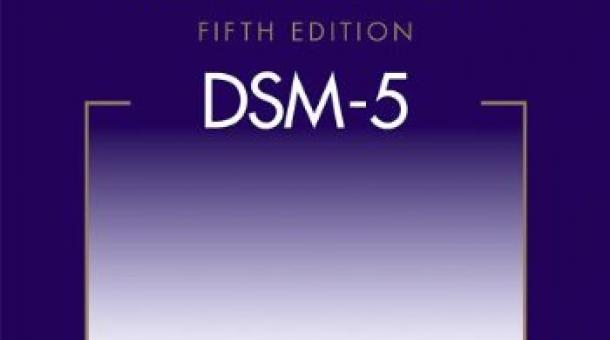All About Personality Disorders: Antisocial Personality Disorder #2


Antisocial Personality Disorder
Antisocial Personality disorder (AsPD) is a personality disorder characterised by a complete disregard for both rules, and other people. It is often linked to psychopathy, however not all people with AsPD are psychopaths. For an official diagnosis of AsPD the person must meet three or more of these criteria: 1) failure to conform to social norms, 2) repeated deception, 3) impulsivity, 4) aggression, 5) disregard for the safety of their self and others, 6) constant irresponsibility, and 7) a lack of remorse. They also must be over 18 years old, have had evidence of conduct disorder before the age of 15, and their occurrences of antisocial behaviour must not be due to mania or Schizophrenia.
AsPD is the personality disorder which receives the most attention, both in the media and in research, and this is probably due to its link to criminality. Although it is important to remember not all those with AsPD will become criminals. Due to this attention in research, quite a lot is known about what causes it in individuals. Firstly, serotonin has been implicated. Serotonin is a neurotransmitter, meaning it is a chemical that has an effect on the brain. Serotonin has lots of roles in the brain, including affecting mood, appetite, sexual desire and memory. Low levels of serotonin have been implicated in the development of AsPD, especially in those who are young (Moore, Scarpa & Raine, 2002; Black, 2011). This makes logical sense, as it has been shown that low levels of serotonin are associated with impulsivity and aggression, two of which are features of AsPD.
Environmental factors are also important in the development of AsPD. One study examining this was carried out in Brazil, and included a large sample (813 mother-child pairs). They found a high Antisocial Behaviour score in the child was predicted by more severe physical punishment and an absent father. They also found the mothers level of depression or anxiety was a predictor for the older children, but not the younger. Finally, they found having a non-working mother predicted a higher level for those in a low-income family, this is probably due to the stresses of poverty. (Curto et al., 2011).
One study that examines both the importance of genetics and environment on the development of AsPD was conducted by Cadoret, Yates, Ed, Woodworth and Stewart (1995). They followed up twins who had been separated at birth, whose parents had documented histories of Antisocial Personality disorder. They found that both parent’s history of AsPD, and an adverse adoptive environment (marital problems, legal problems and mental health problems) independently predicted the child’s antisocial behaviour, this shows that both genetics and environment are important.
Finally, it has been shown that head injuries can affect the brain, and as a result the individuals behaviour. One of the most famous cases of this within psychology is the case of Phineas Gage, who sustained a nasty head injury, and as a result his entire personality changed. In fact, the area damaged was his prefrontal cortex, and he showed classic signs of AsPD after the accident! This is not surprising as it has been suggested damage or dysfunction of the prefrontal cortex means the individual cannot make moral or social judgements as someone without the damage or dysfunction. Therefore, it could possibly be that damage to the prefrontal cortex in childhood could mean the child never develops moral judgement in the normal way, and thus develop AsPD (Grafman et al, 1996).
There are many barriers to treating an individual with AsPD. Firstly, for treatment to work the individual needs to be motivated to change, and those with AsPD often will not be as they do not understand the need for them to. Also, it is hard to establish if treatment is working as those with AsPD are often manipulative, cunning and deceiving, and so they may be able to make the psychologist think the treatment is working, when it is not. For these reasons, research has suggested outpatient programmes are unlikely to work (Salekin, 2008). CBT also seems relatively useless at treating AsPD (Duggan et al., 2007).
Often, treatment for this disorder is given in a prison setting as the prevalence of AsPD is particularly high in offenders. This leads to a host of problems, as the patients may act as if the treatment is working in an attempt to reduce their sentence. Other researchers have also suggested AsPD would be hard to treat as it is a complex disorder (Pemment, 2013). Individuals with AsPD are offered anger management, which can be useful as anger is linked to antisocial behaviour, but it is not a diagnostic criteria for the disorder and so is not really treating the symptoms of the disorder. The picture is not completely negative however, McRae (2013) suggests treatment can affect inpatients self-understanding.
References
Black, D. (2006). What causes antisocial personality disorder. Psych Central.
Brown, S. L., Botsis, A., & Van Praag, H. M. (1994). Serotonin and aggression.Journal of Offender Rehabilitation, 21(3-4), 27-40.
Curto, B. M., Paula, C. S., do Nascimento, R., Murray, J., & Bordin, I. A. (2011). Environmental factors associated with adolescent antisocial behavior in a poor urban community in Brazil. Social psychiatry and psychiatric epidemiology, 46(12), 1221-1231.
Duggan, C., Huband, N., Smailagic, N., Ferriter, M. and Adams, C. (2007), The use of psychological treatments for people with personality disorder: A systematic review of randomized controlled trials. Personality and Mental Health, 1: 95–125
Grafman, J., Schwab, K., Warden, D., Pridgen, A., Brown, H. R., & Salazar, A. M. (1996). Frontal lobe injuries, violence, and aggression a report of the vietnam head injury study. Neurology, 46(5), 1231-1231.
McRae, L. (2013). Admitting offenders with antisocial personality disorder to a medium secure unit: a qualitative examination of multidisciplinary team decision-making. The journal of forensic psychiatry & psychology, 24(2), 215-232.
Moore, T. M., Scarpa, A., & Raine, A. (2002). A meta‐analysis of serotonin metabolite 5‐HIAA and antisocial behavior. Aggressive behavior, 28(4), 299-316.
Pemment, J. (2013). The neurobiology of antisocial personality disorder: The quest for rehabilitation and treatment. Aggression and violent behavior, 18(1), 79-82.
Salekin, R. T. (2002). Psychopathy and therapeutic pessimism: Clinical lore or clinical reality?. Clinical psychology review, 22(1), 79-112.



Responses